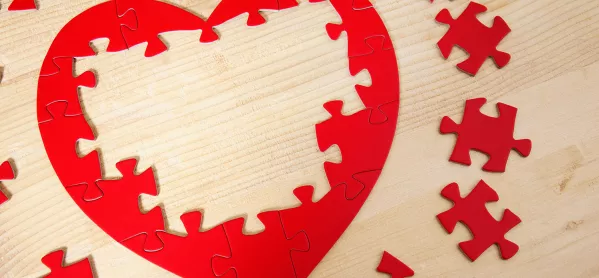Week 627 of homeschooling and concentration spans are not what they were.
“What are you doing now?” I ask the kids, emerging from behind my laptop.
“We’re sending photos of the 3D shape hunt to his teacher,” the older one tells me.
“Don’t send cylinder!” I say, putting a restraining hand on the finger poised above the green arrow.
“Why don’t you send cube and triangular prism? I know they’re not as big as cylinder, but there’s a better variety of objects.”
While I start the long process of transferring the clanking bulk of cylinder to the recycling bin, they send far less incriminating photos of Oxo cubes and Toblerones.
To be honest, by this stage, I imagine there’s a good chance his teacher has her own cylinder collection, but it’s important to try and keep up appearances.
The stress test
Because everyone seems a bit sensitive. A bit more touchy and a tad less forgiving.
Parents who were praising the efforts of their children’s schools as “heroic” back in the clapping-for-carers days are now writing angry emails complaining that the lack of online lessons is damaging their child’s life chances.
I don’t blame the parents. A lot of it is stress talking.
Technological communication doesn’t do nuance very well. Worries that would be instantly diffused with a quick face-to-face chat in school simmer and fester over email.
The phrase “I’m struggling a bit” can mean anything from “I’m having a bit of a crap day” to “I’m so overwhelmed I don’t see how I can possibly carry on”.
While, at the moment, schools are doing all they can to support their children’s mental health, this is not easily done remotely. You can’t calibrate it.
Every Monday, my older child has to tick an emotions sheet. Twice she’s told them she’s anxious, sad and upset. Both times this has been because I wouldn’t let her have a third spoon of sugar on her breakfast cereal.
Mental health lessons
Children’s experiences of this lockdown have varied wildly. Teachers simply won’t know who needs the most help and support until they’re back in front of them.
Of course they can guess. Just like in school, it’s not the ones who shout the most loudly who worry you most - it’s the ones who don’t say anything at all.
“When school fully reopens, we will be prioritising the children’s mental health over academic achievement,” read the letter my friend had from her children’s school.
“It’s nice of them,” she told me, “but I can take care of their mental health. What I really need right now is a bit of education.”
Which is why I hope we don’t have to charge in, all mental health sirens blazing. I’m not convinced a sudden influx of lessons on “feelings” is going to help.
What children - and the staff - have been really starved of is time to chat. A bit of freedom to simply talk to their friends, face to face and without a specific agenda.
It’s a skill at which they may well be rusty. In the 1970s, seven out of 10 children were part of a youth club. Children played out for hours, unsupervised by adults.
Since March, many primary children will have communicated with friends solely through social media and online gaming. Some will have had no communication with their peers at all.
In between the chatting, throw in a lot of activities that scream normality - chanting times tables, handwriting, story time.
Teachers are experts; they’ll spot who needs help.
As the old BT ads put it: it’s good to talk.
Jo Brighouse is a primary teacher in the West Midlands. She tweets @jo_brighouse




